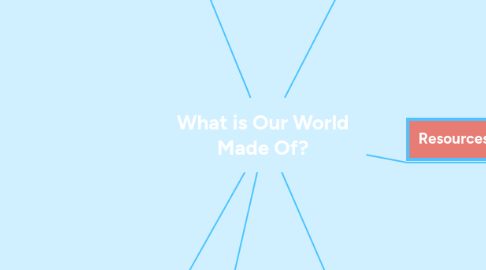
1. Experts
1.1. Blackfoot Rocks and Gems
1.1.1. The Blackfoot Rocks and Gems is a community of rock enthusiasts who maintain a strong link to the Blackfoot Community. Experts from this group could provide a strong indigenous perspective on the science of rocks and minerals.
1.2. Wijaya Gems
1.2.1. Wijaya Gems is a collection of precious minerals and gems from Sri Lanka. This could provide a globalization aspect by comparing the emphasis on certain gems in different communities.
1.3. Calgary Rock and Lapidary Club
1.3.1. The CRLC has a guide on Rockhounding, the collection of rock and mineral samples. This could be something to go over in class before asking students to collect samples.
2. Resources
2.1. Mining Matters has school programming on rocks and minerals, containing two guides on identifying rocks and minerals.
2.2. The Smithsonian Institute has resources for Grade 3-6 students on identifying rocks and minerals. One in particular is a lesson plan with tables that identify certain traits of various minerals.
2.3. The Alberta Geological Society, in partnership with Alberta Energy Regulation, has created an Interactive Mineral Chart for Alberta. This exciting resource lets us view which minerals are present in certain areas of Alberta.
3. Curriculum (Grade 3)
3.1. Science: General Outcome 3–5: Demonstrate knowledge of materials that comprise Earth’s crust, and demonstrate skill in classifying these materials.
3.1.1. Specific Outcome 1: Compare samples of various kinds of rock, and identify similarities and differences.
3.2. Math: Patterns and Relations (Gr. 3): Use patterns to describe the world and to solve problems.
3.2.1. Specific Outcome 3: Sort objects or numbers, using one or more than one attribute.
3.3. Math: Shape and Space (Gr. 3): Use direct and indirect measurement to solve problems.
3.3.1. Specific Outcome 4: Demonstrate an understanding of measuring mass (g, kg) by: Selecting and justifying referents for the units g and kg Modelling and describing the relationships between the units g and kg Estimating mass, using referents Measuring and recording mass
3.4. ELA: General Outcome 3: Students will listen, speak, read, write, view and represent to manage ideas and information.
3.4.1. Specific Outcome 3.3 Organize, Record and Evaluate: organize ideas and information, using a variety of strategies, such as clustering, categorizing and sequencing.
3.4.2. Specific Outcome 3.4 Share and Review: organize and share ideas and information on topics to engage familiar audiences use titles, headings and visuals to add interest and highlight important points of presentation
3.5. Art: Level Two - Grade 3 and 4 Component 1 - Analysis: Students will make distinctions within classes of natural objects or forms.
3.5.1. Concepts: A. Each class of natural forms has distinguishing characteristics. B. Natural forms are related functionally to their environment. C. Earth and water forms reveal many variations. D. Environments are altered by natural forces. E. Change in natural forms occurs over time.
4. Overall and Specific Expectations
4.1. Students will measure, weigh, and record observations (colour, size, shape, and texture) for a variety of rocks and minerals.
4.1.1. I can measure my rock and mineral samples to get an approximate size.
4.1.2. I can identify characteristics of my rock and mineral samples such as colour, size, shape, and texture.
4.1.3. I can weigh my rock and mineral samples to get a weight in metric.
4.2. Students will categorize information in a clear manner and organize it based on the particular rock or mineral being observed. This information will be kept for a visual representation of learning.
4.2.1. I can organize my observations into groups using clustering.
4.2.2. I can record my observations in a clear way.
4.3. Students will collect samples of rocks and minerals from a variety of areas and compare them to rocks and minerals online and during our classroom trip to the Glenbow Museum's Mineral Exhibit.
4.3.1. I can collect samples of rocks and minerals in different areas.
4.3.2. I can compare my rocks and minerals to pictures online or samples in the museum to classify them.
4.4. Students will identify clear differences between chosen rocks and minerals and understand how these characteristics can change over time.
4.4.1. I can tell the differences between my rocks and minerals.
4.4.2. I can understand how the characteristics of my rocks and minerals can change over time.
5. Site
5.1. Glenbow Museum: Mineral Exhibit
5.1.1. Group Pricing is available for Child/Youth groups.
5.1.2. Connection with experts at the Glenbow Museum could introduce a strong perspective on rocks and minerals.
5.1.3. The Glenbow Museum Mineral Exhibit has collections on Crystals, Gems, Metals, Fluorescent Minerals, and a variety of other materials.
